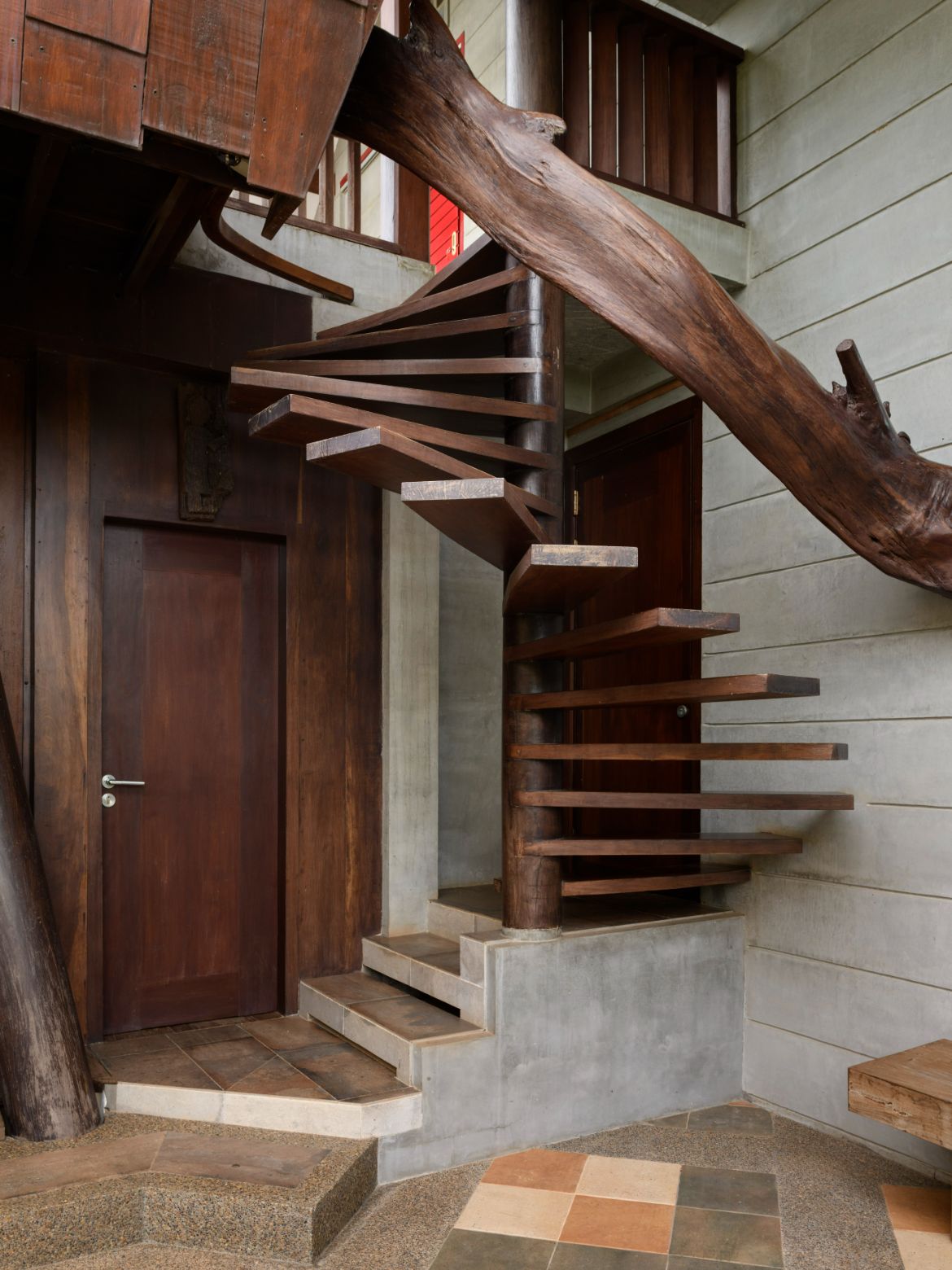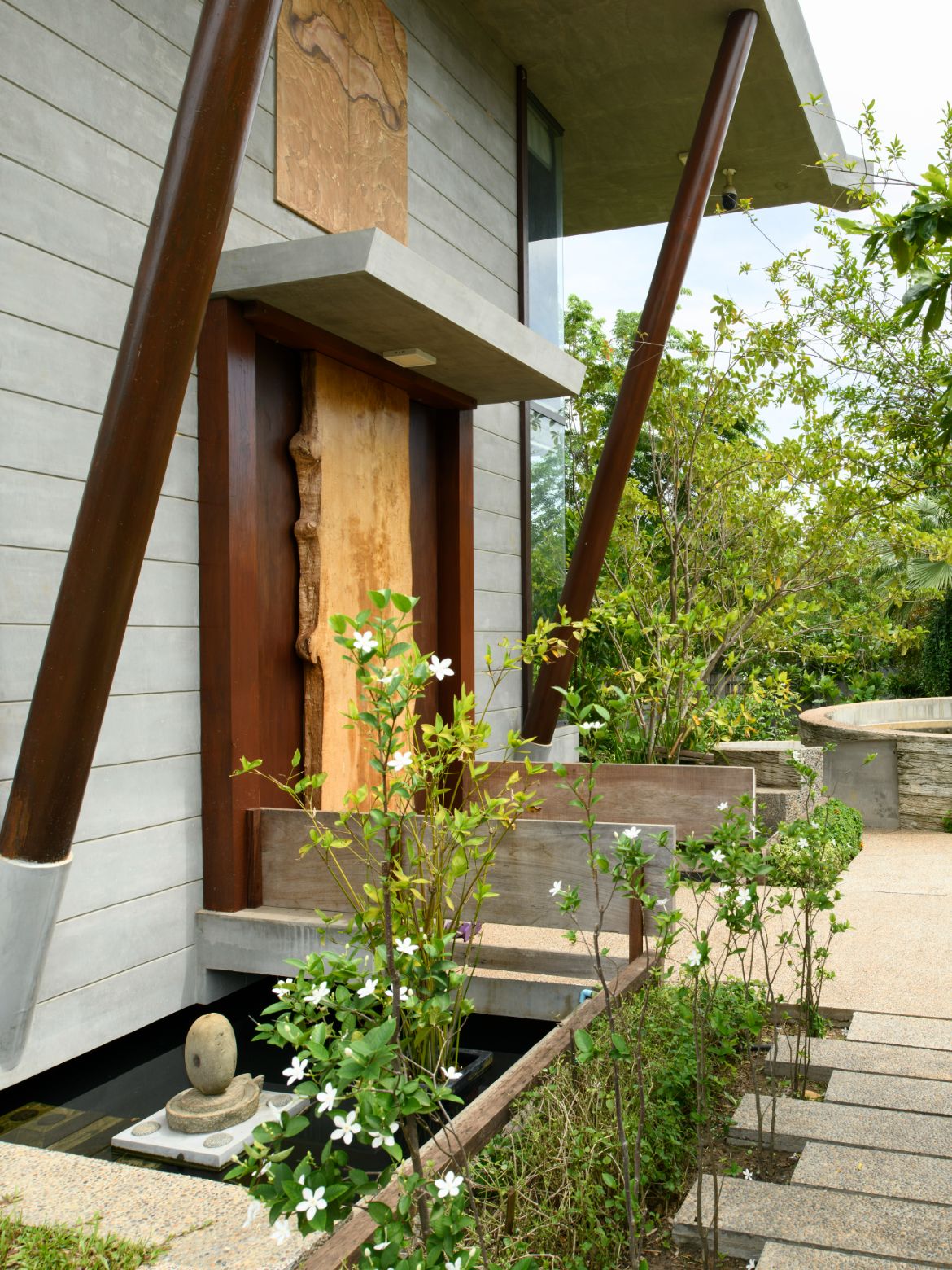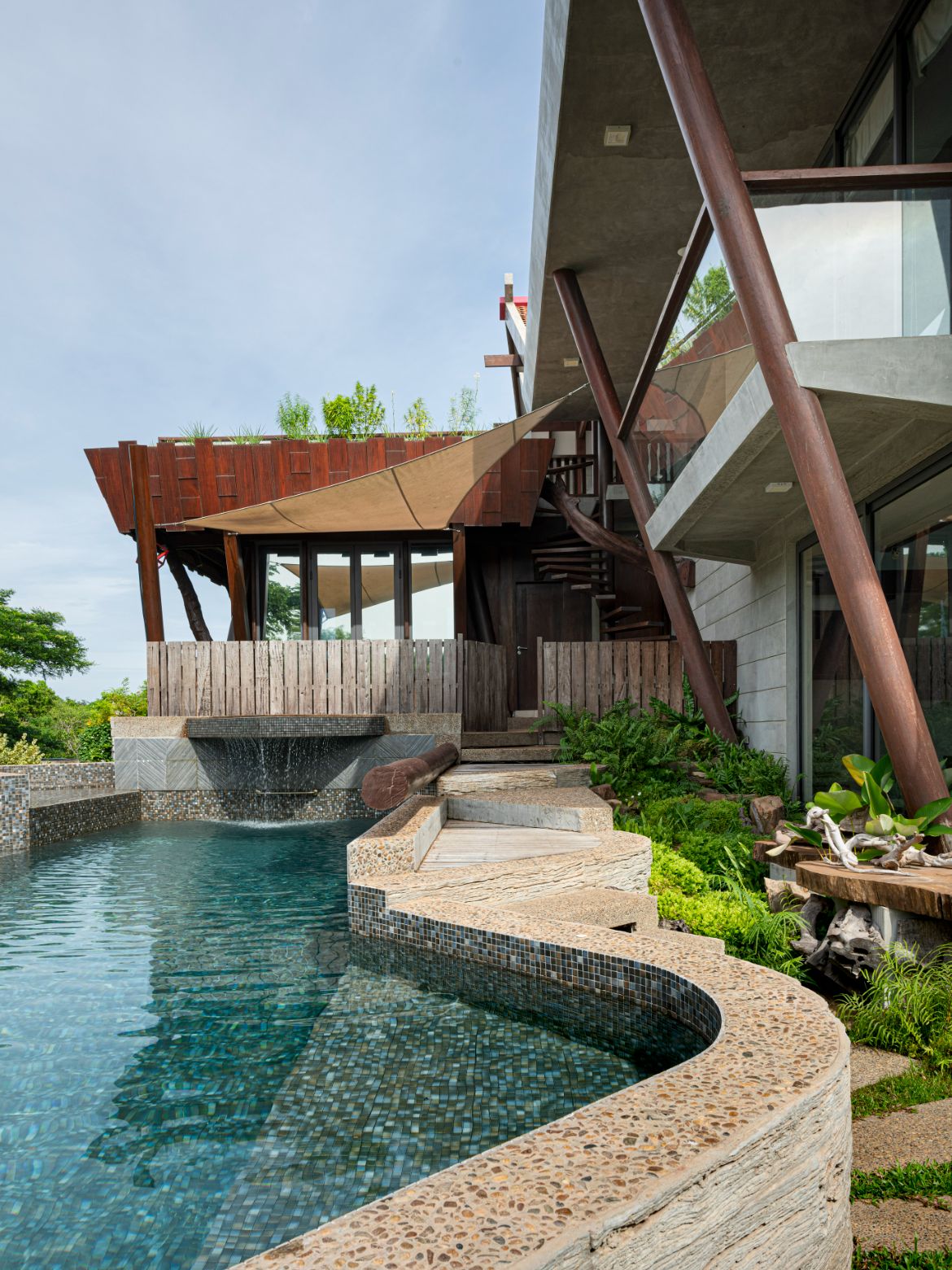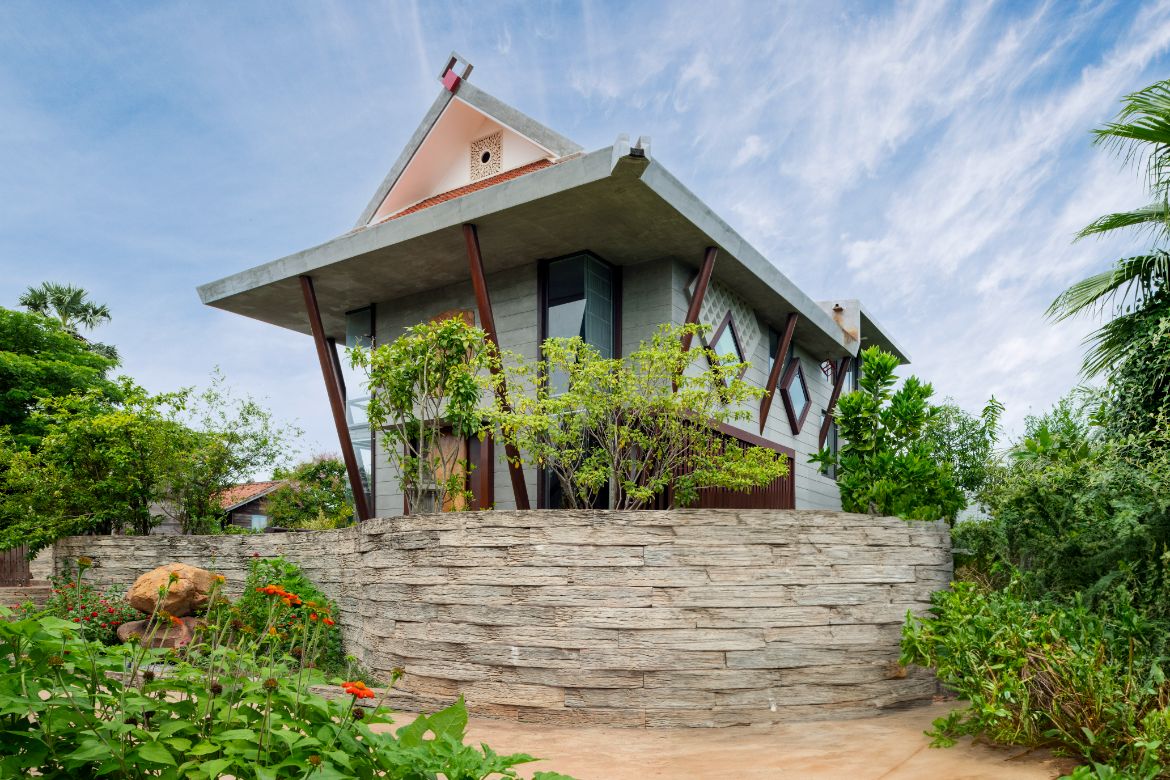Located in Siem Reap, Cambodia, Neang Noun House is the home and studio of architect Sokol Hok. As Siem Reap is the home of Angkor Wat, Hok has conceived a design for his residence that is sensitive to both place and culture.
Neang Noun House pays tribute to the traditional timber homes of Khmer architecture however the internal space has been re-invented, resulting in a design that combines the best aspects of tradition with contemporary Cambodian life.

The home is positioned on a slope with stone steps that lead to the entrance with a waterfall and sculpture. From the exterior, the traditional Khmer pitched roof dominates the building with central columns that support the double rows of the roof. While time-honoured Khmer building techniques have been employed, modern materials coupled with new building techniques have helped create the structure.
There is optimal flow throughout the interior of Neang Noun House where form and function merge to provide facility for the residents. There are public spaces on the ground floor and private areas accessed by paving stones that encircle the property. These guide the visitor to the first floor and a modern timber spiral staircase that leads to the bedrooms.
Related: Ravine House by Rolf Ockert. Architect

The open-plan living space connects the outside with the inside where the natural beauty of the curated gardens and unique swimming pool provide a connection to nature and outstanding views beyond the footprint of the home. The ceilings feature delicate timber carvings inspired by traditional musical instruments, all expertly conceived and realised by local craftsmen. The roof becomes an integral instrument to sustain life, not only does it offer shelter, but accommodates a water filtration system and solar.
While the home includes such materials as glass and concrete, the heritage of Khmer architecture, which is primarily timber-based, is the genesis of the design. Reflecting culture and a way of life, silks and other textiles have been included, while leather is the material of choice on dining chairs and sofas.

Neang Noun House is a place where there is a meeting of cultures for a modern-day Cambodian family. As the architect’s own home, there was the opportunity to take his vision beyond the everyday, inspired by tradition and transcending it.
Hok is passionate about preserving the architecture of Cambodia, in particular Khmer wooden houses, and published a book in 2022 titled, Cambodian Wooden Houses: 1500 Years of Khmer Heritage co-authored with Darryl Collins.

By connecting the natural landscape with a man-made structure, Neang Noun House becomes a home for a family that honours an architectural heritage and a modern lifestyle but also celebrates the natural world. It is a place to live and thrive and appreciate the best of all worlds.
Neang Noun House was photographed by Dianna Snape a member of the 2024 INDE.Awards jury.










